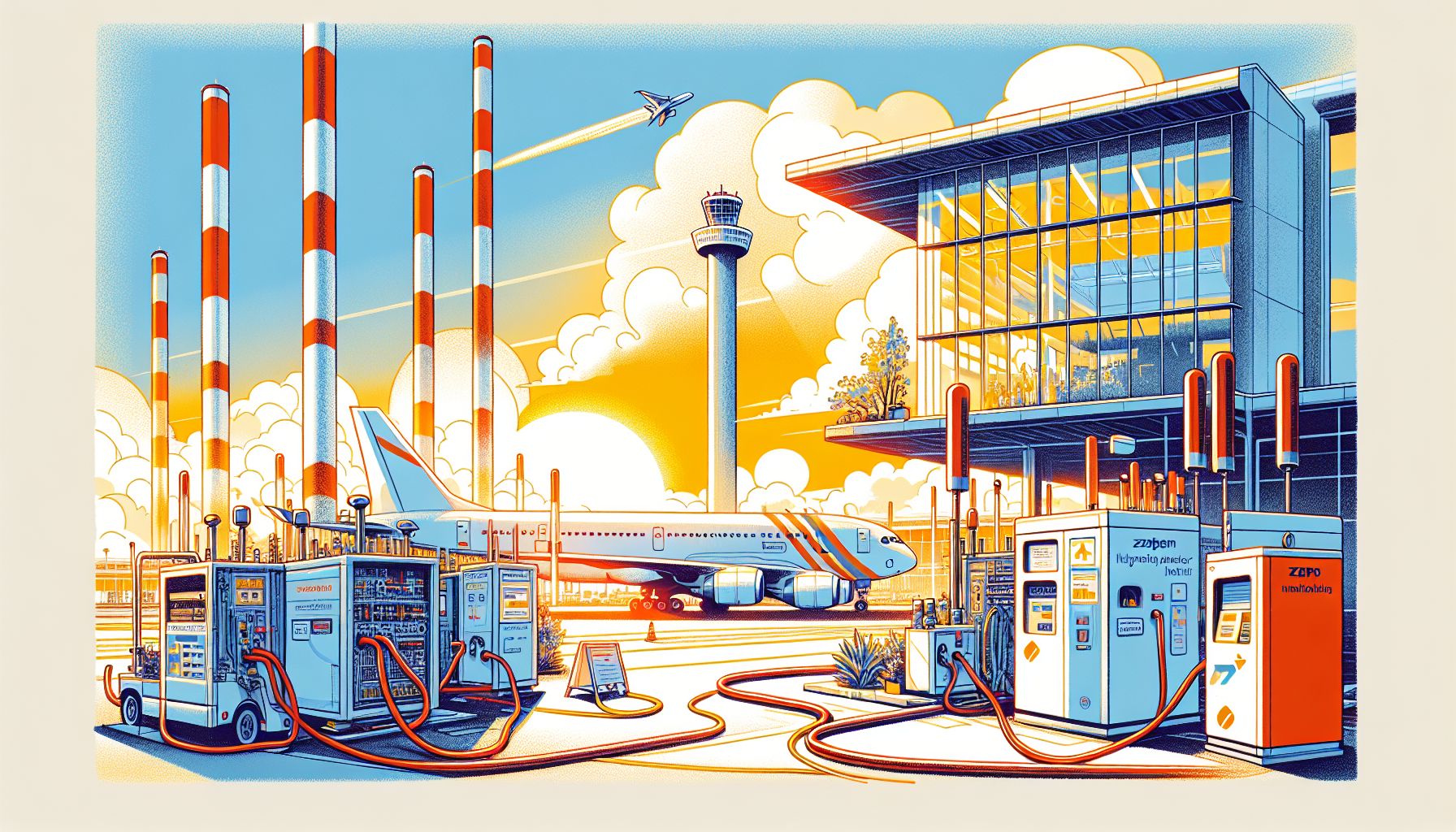Schiphol Airport Pioneers Hydrogen-Powered Aircraft Support

Amsterdam, Wednesday, 14 August 2024.
Amsterdam’s Schiphol Airport is testing the world’s first hydrogen-powered Ground Power Unit for aircraft. This innovative technology, developed by Dutch firm zepp.solutions, aims to reduce carbon emissions and enhance sustainable ground operations, marking a significant step towards emission-free airport activities by 2030.
The Role of Zepp.solutions and Dynell
The groundbreaking hydrogen-powered GPU is a collaborative effort between Dutch firm zepp.solutions and Austrian GPU manufacturer Dynell. Zepp.solutions, headquartered in Delft, Netherlands, specializes in hydrogen fuel cell technology, while Dynell brings expertise in ground power unit manufacturing. Together, these companies have created the H2-GPU, a unit capable of supplying stationary aircraft with the necessary power for operations such as lighting and cockpit functionalities.
Operational Efficiency of H2-GPU
One of the standout features of the H2-GPU is its operational efficiency. Unlike battery-based e-GPUs, which need to be transported to charging points, the H2-GPU can be refueled on-site by a hydrogen tanker truck. This innovation not only saves significant time but also addresses the issue of insufficient capacity faced by current e-GPUs. The H2-GPU’s ability to provide consistent and adequate power makes it a viable alternative to diesel-powered units, which are still in use due to the limitations of e-GPUs.
Green Hydrogen and Environmental Impact
The hydrogen used in the H2-GPU tests at Schiphol is green hydrogen, produced using electricity generated from renewable sources like wind and solar power. This ensures that the entire process is free from CO2 emissions, aligning with Schiphol’s goal of achieving emission-free ground operations by 2030. The airport’s commitment to using green hydrogen underscores its broader strategy to reduce its carbon footprint and improve air quality for both employees and the local environment.
Collaborative Effort and Future Prospects
The pilot project at Schiphol involves a consortium of partners, including KLM, ground handling companies, and various stakeholders within the aviation sector. The initiative is part of TULIPS, a European partnership co-funded by the European Commission, which involves 33 aviation-related parties and knowledge institutes. The project’s broader aim is to accelerate the development and implementation of sustainable technologies in airport operations, including large-scale sustainable aviation fuel (SAF) deliveries and sustainable energy storage solutions.
Leadership and Vision
Sybren Hahn, Executive Director of Infrastructure at Schiphol Airport, expressed pride in the airport’s pioneering efforts: ‘The hydrogen-powered GPU aligns with our ambition to achieve emission-free ground activities by 2030.’ Maarten Koopmans, Managing Director of KLM Cityhopper, emphasized the importance of developing hydrogen-powered equipment to meet operational requirements and achieve emission-free ground operations. Their combined leadership highlights the commitment to innovation and sustainability within the aviation industry.
Conclusion
As Schiphol Airport continues to test and refine the H2-GPU, the initiative sets a new standard for sustainable airport operations. By integrating hydrogen technology into ground support equipment, Schiphol not only improves operational efficiency but also contributes significantly to global efforts to combat climate change. This pioneering project exemplifies how collaborative efforts and innovative technologies can drive the aviation industry towards a greener future.

